
The trees and shrubs on your property are a valuable part of your landscape and therefore important to you to protect. Unfortunately, there are plenty of potential problems that could be causing your trees and shrubs harm. If you have trees and shrubs on your property that are suffering, you might be wondering what’s wrong.
One potential culprit is pests like mites and insects.
There are a variety of shrub and tree insects in Tennessee and Mississippi that could be damaging your beloved landscape. Our warm climate makes an ideal habitat for many different insects, many of which never even go dormant in our area.
In order to help you understand what you may be dealing with, we’ve rounded up a list of some of the worst shrub and tree pests in Tennessee and Mississippi in the area.
Let’s take a look at what you could expect with each of these.
Also referred to as “plant lice,” aphids are soft-bodied insects that use their piercing sucking mouthparts to feed on the plant sap in leaves, stems, and roots. They tend to feed in groups and prefer new growth. Aphid damage causes yellowing leaves and you may also notice foliage or stems covered in a sticky substance, a sign that pests have been feeding on sap.
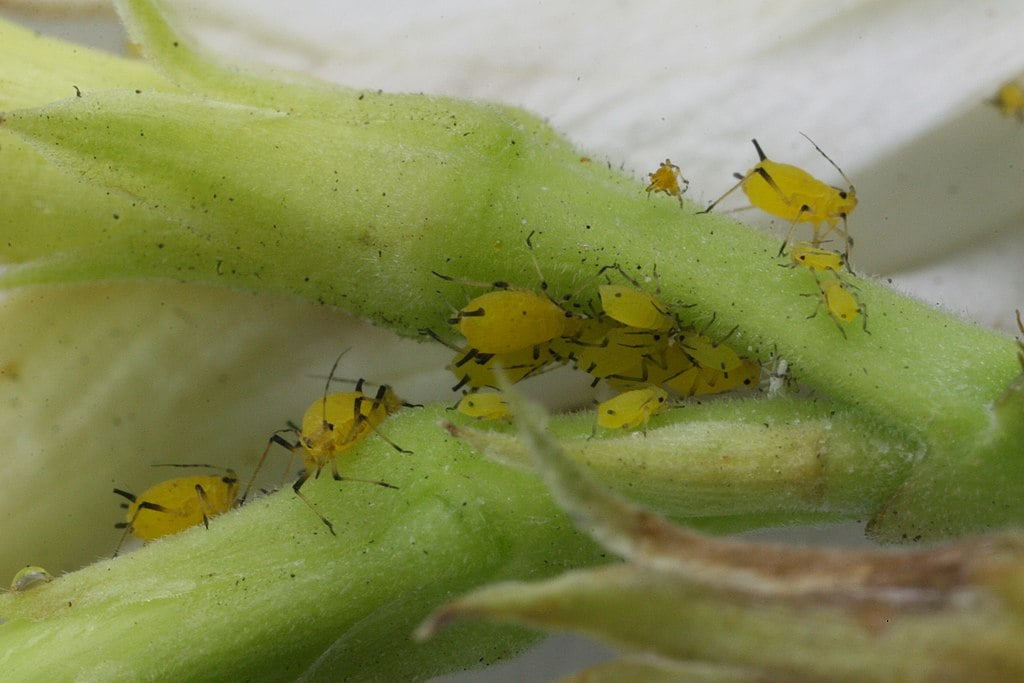
Aphids are best controlled with a professional contact control product.
Leaf miners are tiny black flies. It is the larvae of these flies that causes tree and shrub damage, which shows up as yellow squiggly lines in the leaves. These lines are where larvae have bored their way through the interior of the leaf. The damage can also appear as spots or blotches.
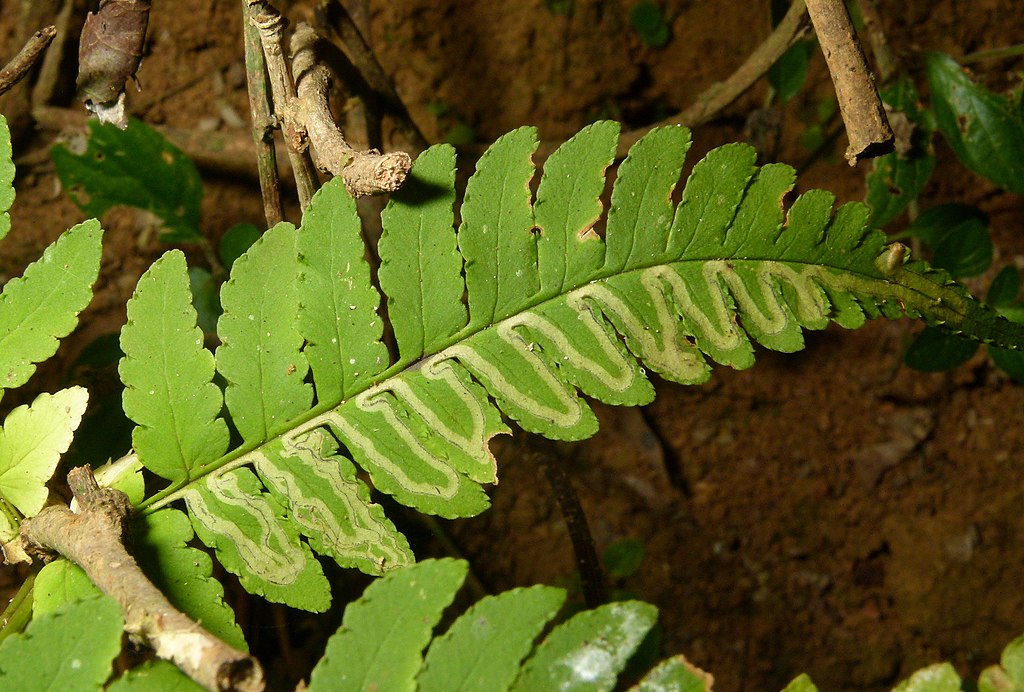
Leaf Miners are best controlled with a systemic control product that will translocate through the plant.
These tiny pests (sometimes no bigger than a half a millimeter long) are white in color and often gather on the part of the plant where the leaves attach to the stem. All plant species are at risk for a mealybug infestation as they are not very discerning. Mealybugs feed by sucking sap from plant roots, crowns, stems, twigs, flowers, fruit, and leaves. They leave behind a sticky substance that attracts other pests like ants.
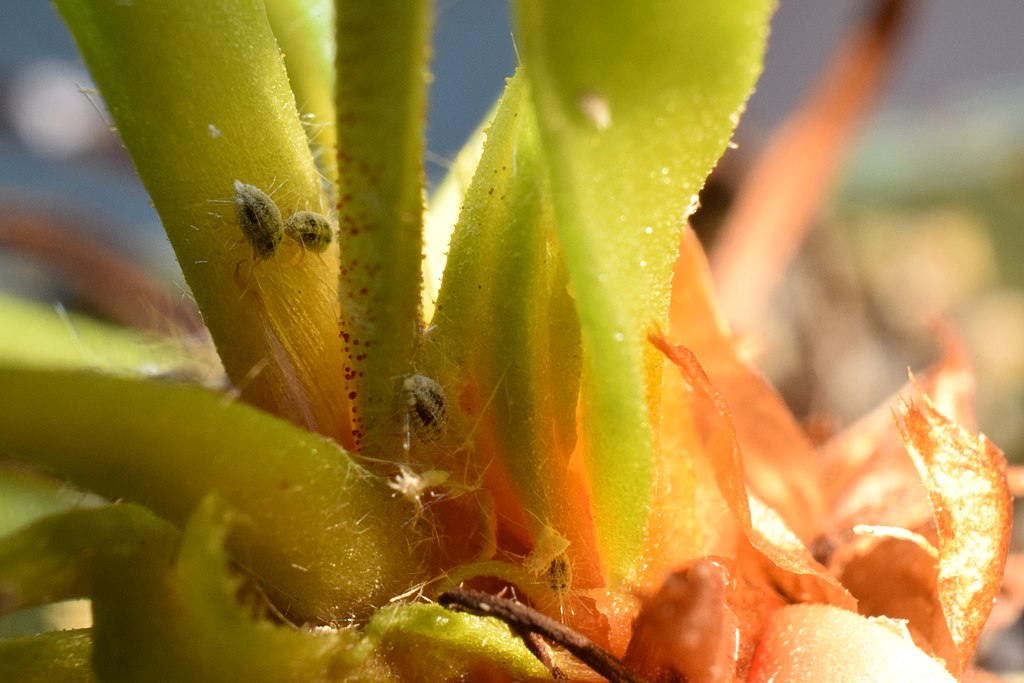
Mealybugs are best controlled with a professional contact control product.
This mite has 8 legs and resembles a spider, however it is incredibly tiny. At only 1/64 inch long, you may never be able to see it without magnification. Although there are other types of mites, spider mites are the most notorious and are highly destructive. There are many plants on which we find spider mites including Boxwood, Arborvitae, Burning Bush, and Spruce, to name just some. Spider mites use their piercing mouthparts to feed on the chlorophyll in plants, which can lead to white spots or a stippled appearance. As these pests continue to feed, the damaged foliage will eventually turn brown and fall off.
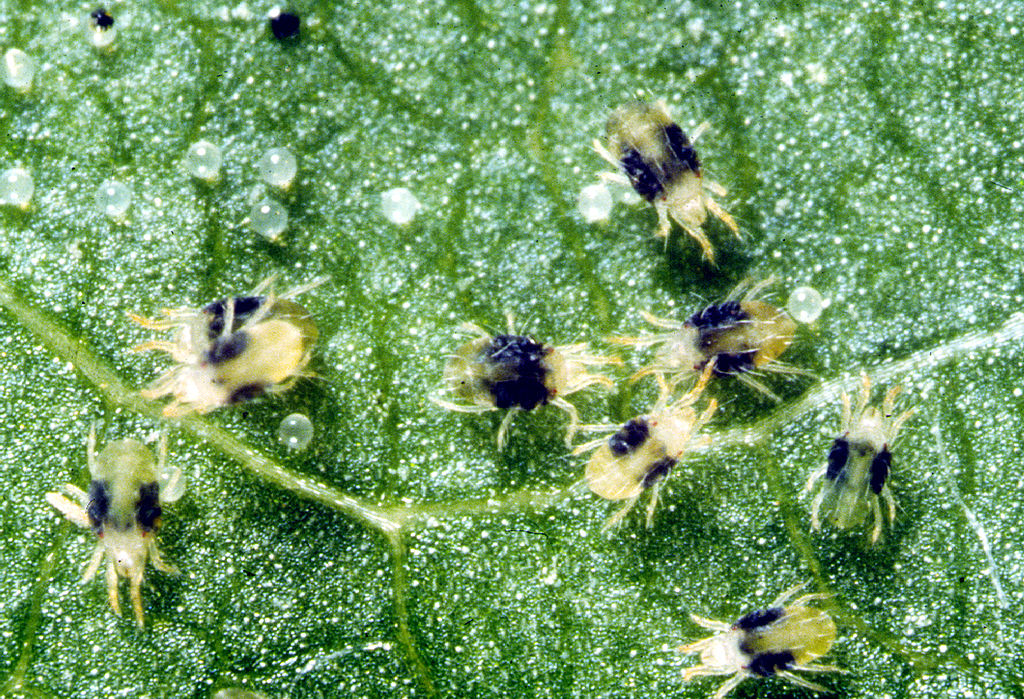
Spider mite control requires a specialized approach. It’s important to note that there are both harmful and beneficial mites found in your trees and shrubs. Since the beneficial mites help eat the harmful ones, it’s important that a selective miticide product is used that won’t kill all of your mites.
Scale insects are sap-feeding insects named for the scale that covers and conceals their bodies. Depending on the species of scale, you may find them on tree branches, stems, foliage, or fruiting bodies. Scale feed using their sucking mouthparts to drain your plants of sap. We often find scale on hollies.
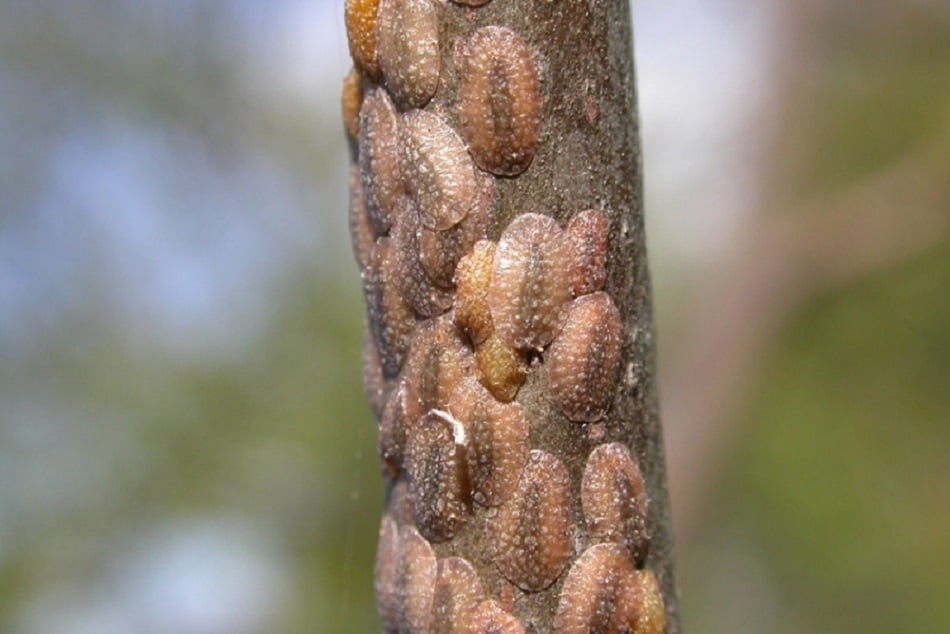
Getting rid of scale can take a multi-pronged approach that includes appropriately timed insecticides. Of course, the type of scale also makes a huge difference here. Scale that is found on crepe myrtle trees, for instance, requires a specialized treatment that is not part of our regular Plant Health Care program.
This pest gets its name from the bag that it constructs with silk and pieces of the plant’s foliage. The adult bagworm larvae pupates and turns into a moth in the fall, female moths then lay up to 1,000 eggs in each bag, which hatch in the spring. The young larvae, though tiny, are highly destructive as they voraciously feed until they grow to be a full inch.
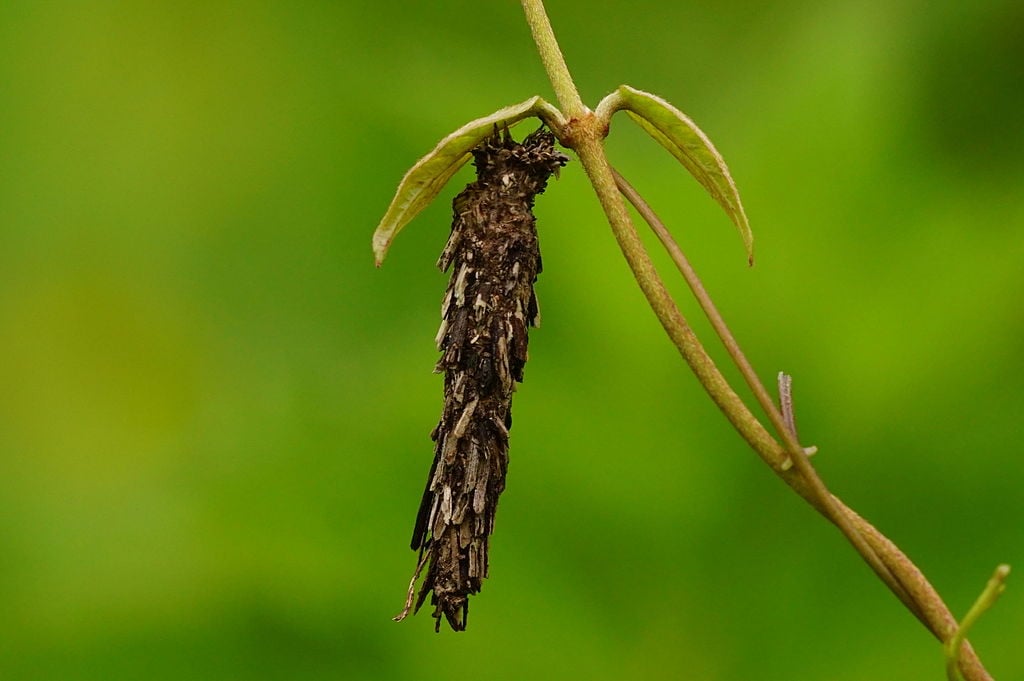
Killing bagworms can be done by hand-picking or cutting the bags from infested plants before they hatch. However, if you have a complete infestation, particularly on a large plant, this is impractical. A professional can apply a contact control product while the bagworms are newly-hatched and actively feeding in order to get rid of them. Implementing preventive control is also important to stop the next generation of bagworms from spreading.
Though tiny (these flat bugs only grow to ⅛ inch long), these pests feast on the underside of your leaves, sucking out the plant fluids. In Memphis, TN and Olive Branch, MS, we see this problem most often with Azaleas. If you have these shrubs dying, lace bugs are a possible culprit. Lace bug damage will look like silvery, white, or yellow spots that were caused by the lace bugs sucking on the leaf.
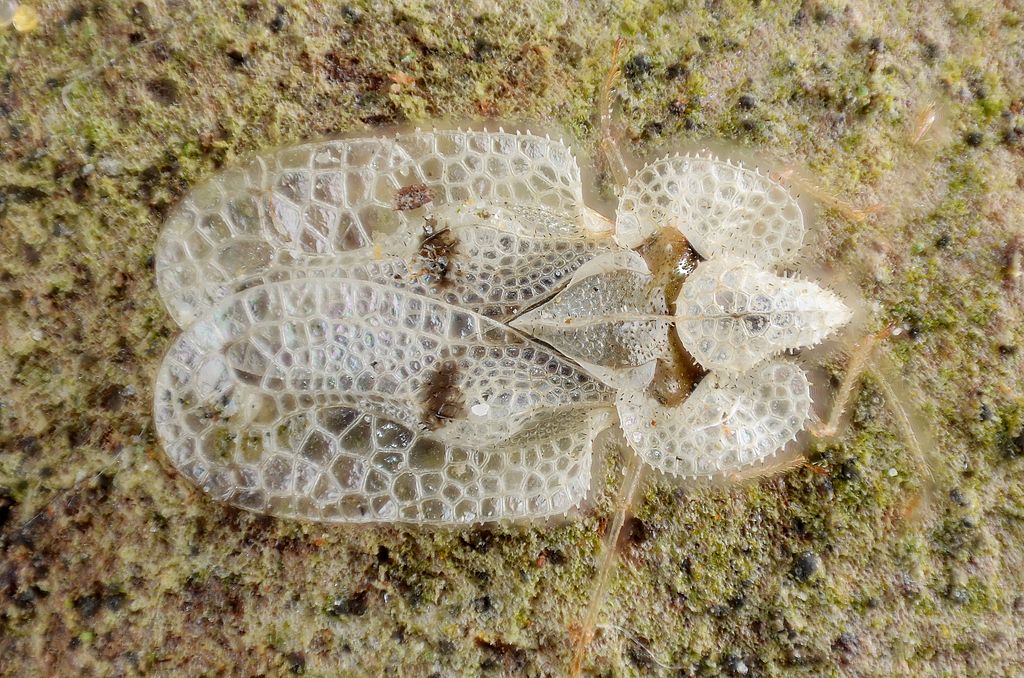
Lace bugs can be somewhat controlled with a contact control product though we also recommend preventative systemic control product to prevent them in the future.
Japanese beetles are shiny with a metallic hard shell and are known to cause damage to some 300 species of plants including roses, birch trees, linden trees, and more. There’s a good chance that you’ve seen them before as they’re hard to miss with their shiny shell and noticeable size (approximately a half-inch long).
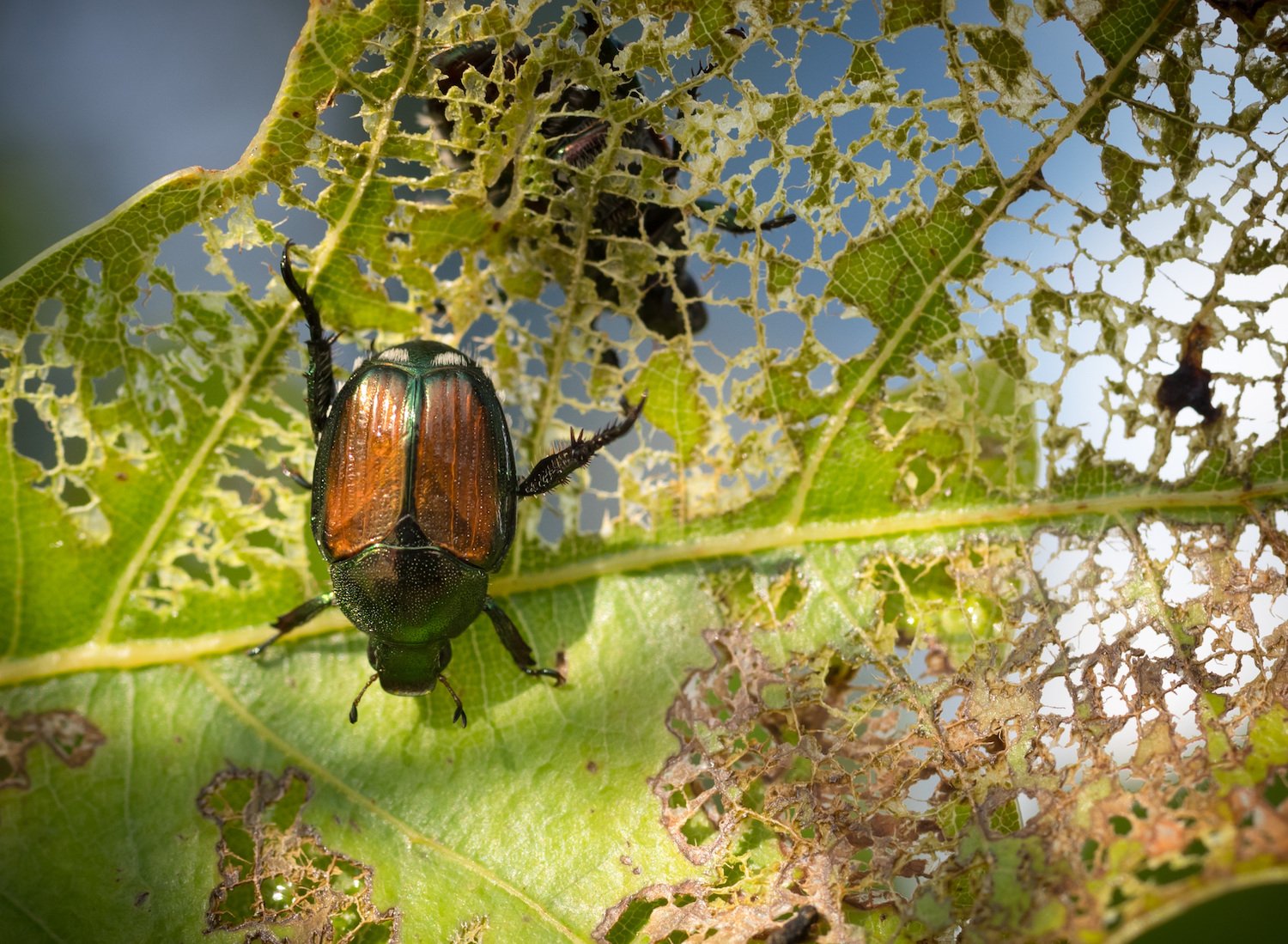
The biggest problem with this pest is that they feed in groups. While a single beetle wouldn’t do much damage on its own, Japanese beetles are found in large groups that do quite a bit of damage feeding on leaves.
Though popular, Japanese beetle traps are not a good way to control these pests. They only attract more beetles to your property. Instead, a professional contact control product can address these pests as well as some preventative, systemic materials.
These small winged insects have a powdery wax that protects them while also making them easy to identify. Whiteflies use their piercing mouthparts to suck the sap out of your plants. This will lead to leaf damage. In addition, they also excrete honeydew which attracts other nuisance pests to your plant.
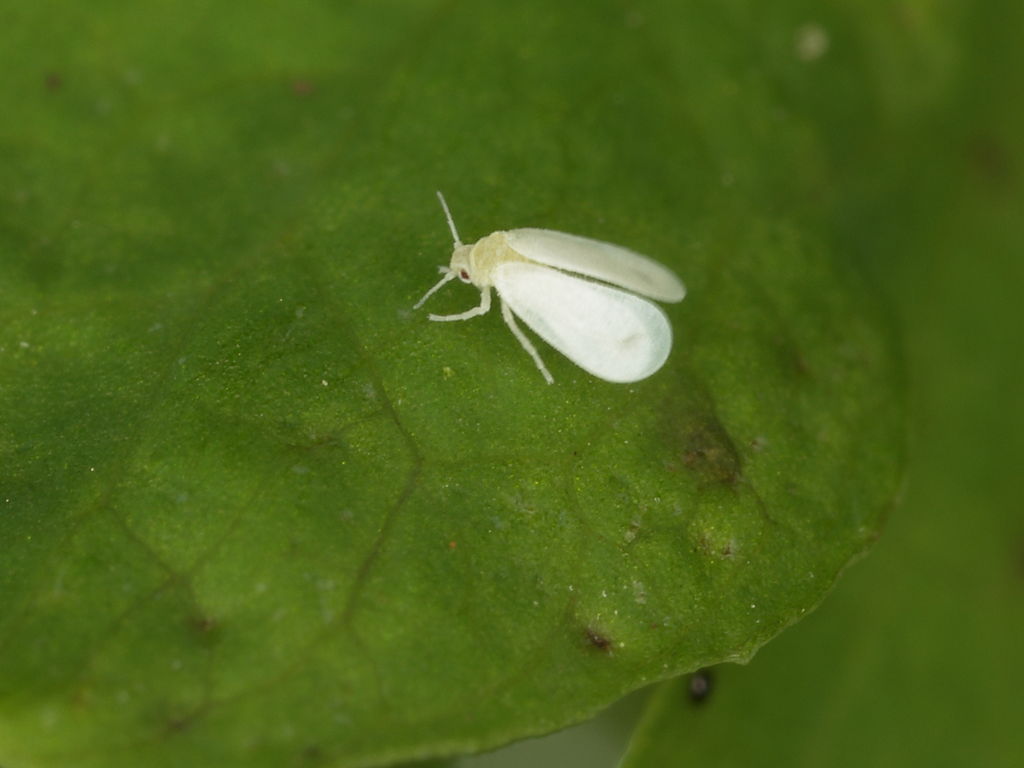
Whiteflies are best controlled with contact control.
Considering the fact that there are so many shrub and tree pests in Tennessee and Mississippi, and many have their own method of treatment, it is best to leave this in the hands of a professional who will know exactly what you’re dealing with as well as how to best treat it.
In addition to curatively treating any existing problems, a lawn care company that offers a Plant Health Care program will also help you prevent many of these problems in the first place (or at least set you up with better protection after an existing problem is dealt with).
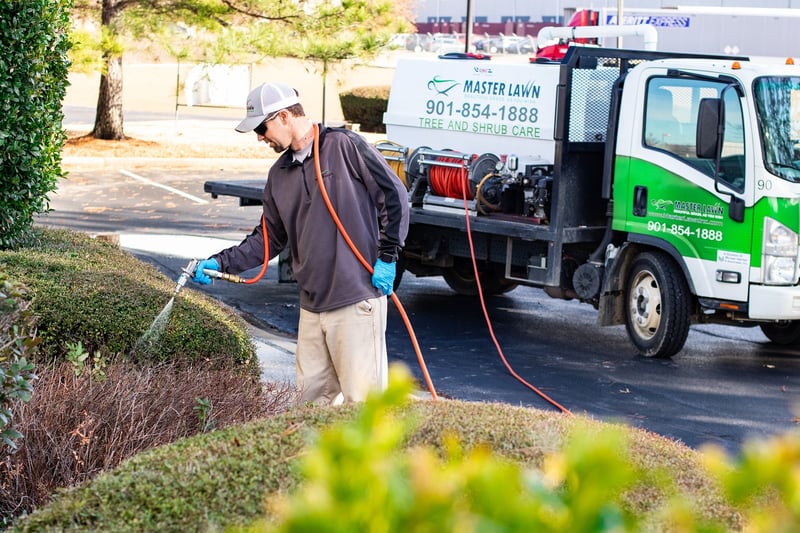
Plant Health Care provides your trees and shrubs with vital nutrients that they need to thrive while also protecting them against insects and disease. The treatments combine fertilization, pest control, and disease control and will help reduce the risk of your plants succumbing to these problems.
By making an investment in a company that you can trust, you can stop worrying that you are going to lose your plants to some of the common shrub and tree insects in Tennessee and Mississippi. Instead, you can gain valuable peace of mind that you’re in good hands.
Ready to invest in protecting your trees and shrubs from pests? Request a quote, get your customized plan, and become the master of your landscape.
Image sources: aphids, leaf miner, mealybugs, spider mites, scale, bagworm, lace bug, whitefly
Michael Hatcher is Founder / Chairman of Michael Hatcher & Associates.
These Stories on Insects & Pests
8255 Center Hill Rd
Olive Branch, MS 38654
8164 MS-178
Olive Branch, MS 38654
Phone: (901) 445-9336
Fax: (901) 853-7353
Copyright © Master Lawn | All Rights Reserved.